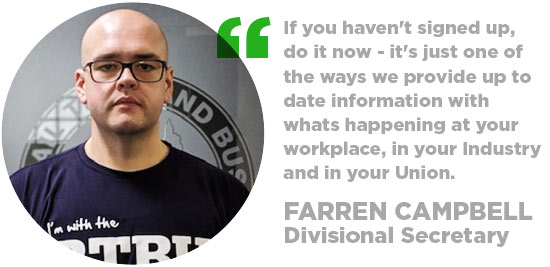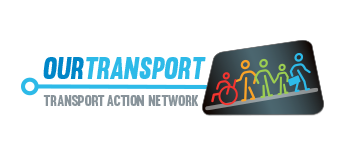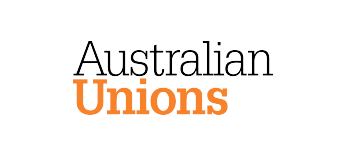HEALTH STANDARD FOR RAIL WORKERS
GUIDE TO SLEEP APNOEA TESTING
New Standard
Members may be aware that the National Standard for Health Assessment of Rail Safety Workers has been updated, with the new 2024 edition coming into effect as of 11 November 2024. These changes include significant updates to the sleep apnoea assessment process, which will affect many members. This is the first change to the Standard in about 7 years.
What’s new relating to sleep apnoea?
All Category 1 and 2 rail safety workers will now undergo mandatory screening for sleep apnoea.
This involves the use of validated tools to identify risk factors associated with obstructive sleep apnoea.
If flagged as “at-risk”, workers will be referred for a diagnostic sleep study, either through overnight monitoring in a clinic or a home-based study.
When are you deemed “at-risk”?
The Standard lowers the threshold to consider a worker “at-risk” and there are two categories of “at-risk” – “at high risk” and “at specific risk”.
Each has different implications for your medical clearance and ability to drive trains.
High Risk
A worker is “at high risk” if they have demonstrated sleepiness or inattentiveness.
You will have demonstrated sleepiness or inattentiveness if you have a:
- Epworth Sleepiness Scale (ESS) score ≥ 16; or
- History of self-reported sleepiness or inattentiveness at work; or
- Work performance or incident reports suggestive of excessive sleepiness.
Members should be careful when responding to disciplinary or incident investigations to not accidentally self-report a history of sleepiness or inattentiveness at work in circumstances where there is none.
Whilst it is crucial to provide accurate and truthful information to ensure safety concerns are appropriately addressed and managed, there is a tendency amongst rail workers to try and provide an explanation for an incident and often workers say they were fatigued when they are in fact guessing as to what caused the incident.
We also advise members to avoid terms like ‘micro-sleep’, as such terms often carry medical connotations that many members do not intend to convey.
For example, a ‘micro-sleep’ can technically become an undiagnosed syncope (ie a fainting event) and will see you off the road for five years if no explanation can be found.
Similarly, workers will also be deemed at high risk if they fail the ESS. Failing the ESS means scoring 16 or higher on this self-reporting questionnaire, which evaluates the likelihood of dozing off in various situations. The ESS is designed to identify excessive daytime sleepiness, a key indicator of high-risk sleep apnoea. Again, this is a self-reporting questionnaire process, so members should become familiar with the ESS. The following table is the ESS as contained in the Standard

Specific Risk
A worker who is not high-risk is “at specific risk” if they have significant risk factors or a “STOP-Bang” test score of ≥ 3. Workers will be at specific risk even if they do not feel, and have no demonstrated history of, sleepiness or inattentiveness.
The STOP-Bang test is a screening tool/questionnaire that assesses risk factors for obstructive sleep apnoea. All rail workers will undertake this test as part of their medicals moving forward. The acronym stands for:
S: Snoring loudly
T: Feeling Tired or fatigued during the daytime
O: Observed stopping of breathing during sleep
P: High blood Pressure
B: Body Mass Index (BMI) > 35 kg/m2
A: Age > 50 years
N: Neck circumference > 40 cm
G: Gender (male)
If the answer is “yes” to any of the above questions, the workers receive a point. A score of 3 or higher indicates increased risk and the need for a sleep study. In addition to the STOP-Bang, significant risk factors that may result in a worker being required to undertake further evaluation include a diagnosis of type 2 diabetes, poor memory and concentration, morning headaches and insomnia.
At-risk and your health clearance
If, following the above processes, you are determined to be “at-specific-risk” or “at-high-risk” you will be required to attend a sleep study and have the results interpretated by sleep specialist.
Be aware it may take considerable time to arrange a sleep study and produce a report.
If you are deemed “at-specific-risk” you will receive an interim health clearance of “Fit for Duty Subject to Review”. This means you can keep working and driving trains whilst the sleep is being arranged.
If you are deemed “at-high-risk” you will receive an interim health clearance of “Temporarily Unfit for Duty”. This means you will not be able to work driving trains until at least the results of the sleep study are known. This may be a significant period without pay.
Following Sleep Study
Workers diagnosed with no or mild sleep apnoea will receive a clearance of “Fit for Duty Unconditional.”
For moderate sleep apnoea, a clearance of “Fit for Duty Subject to Review” is issued, contingent on treatment compliance.
In cases of severe sleep apnoea, workers will initially be deemed “Temporarily Unfit for Duty” but may transition to “Fit for Duty Subject to Review” if treatment proves effective.
Non-compliance or ineffective treatment in moderate or severe cases will result in “Temporarily Unfit for Duty.”
Interaction with Enterprise Agreements
All EA’s have different terms relating to Health Assessments.
Generally, your employer should pay for the costs of the sleep study, however most EA’s require workers to use personal leave to ensure they are paid when deemed temporarily unfit for duty.
If you need assistance with this, please contact the Union.
On the following page is a flowchart extracted from the Health Standard that shows the sleep apnoea process described in this newsflash.




